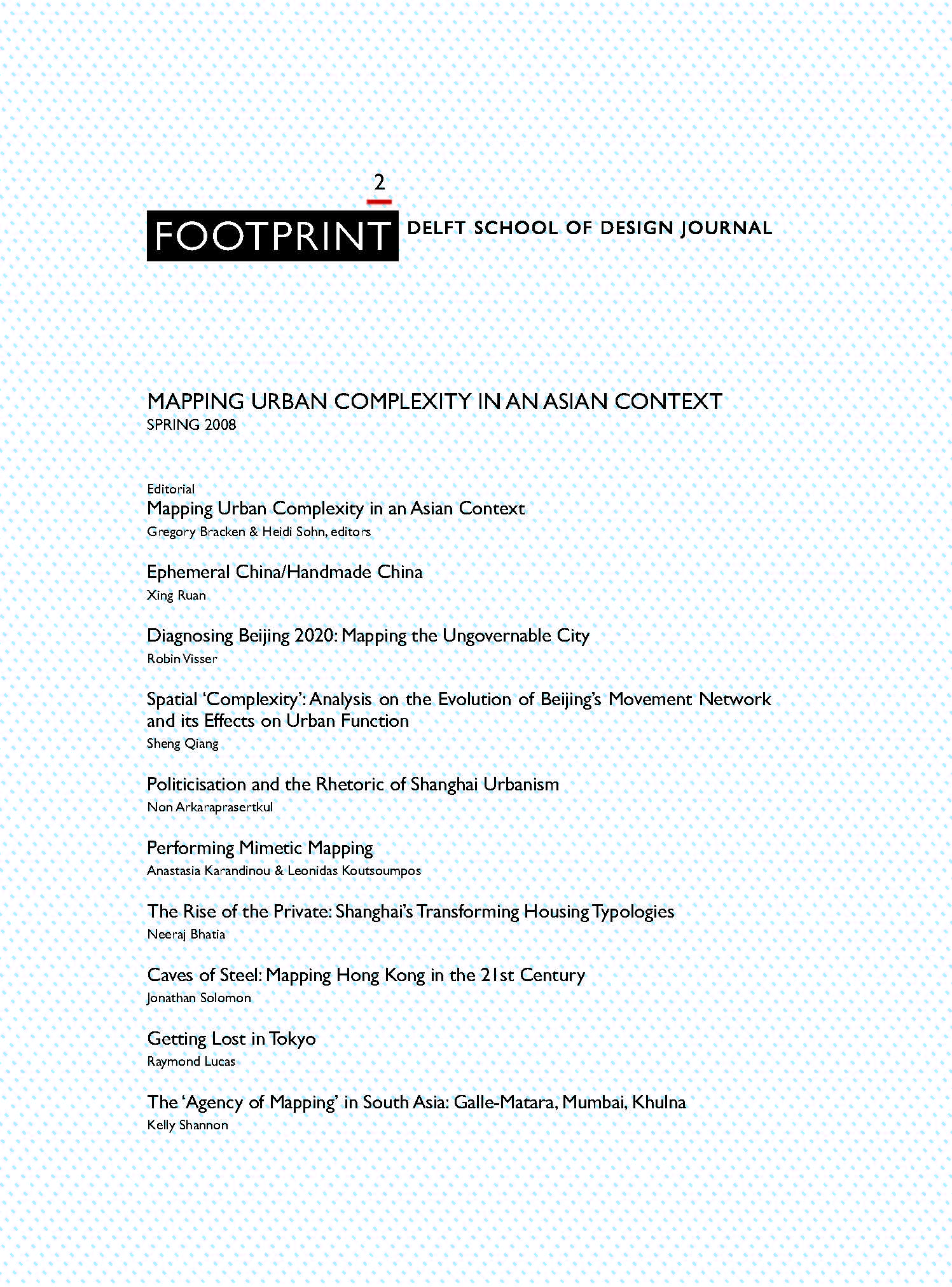Mapping Urban Complexity in an Asian Context
DOI:
https://doi.org/10.7480/footprint.2.1.672Abstract
The second issue of Footprint aims at reuniting two themes which are receiving a great deal of attention in recent times: Asia’s extraordinary urban growth, and the problematique of mapping highly complex urban environments. The 21st century, forecasted by many as the ‘Pacific Century’, brings to the fore the region's economic, social, political and cultural changes, wide-ranging in their manifestation and far-reaching in their consequence. All of these factors are inscribed in the urban environment. In a region where a population of one million constitutes a small settlement and mega-cities such as Tokyo and Shanghai have come to dominate the global network, sheer size is itself an important issue and not just in practical terms. Then there is the apparent chaos that is actually a delicately balanced autopoeisis in cities such as Mumbai, as well as the interesting and potentially useful city-state model of Hong Kong. These conditions and rising phenomena bring important questions on the potentials and relevance of mapping to the fore.
Downloads
Published
Issue
Section
License
- Authors retain copyright and grant the journal right of first publication with the work simultaneously licensed under a Creative Commons Attribution License that allows others to share the work with an acknowledgement of the work's authorship and initial publication in this journal.
- Authors are able to enter into separate, additional contractual arrangements for the non-exclusive distribution of the journal's published version of the work (e.g., post it to an institutional repository or publish it in a book), with an acknowledgement of its initial publication in this journal.





